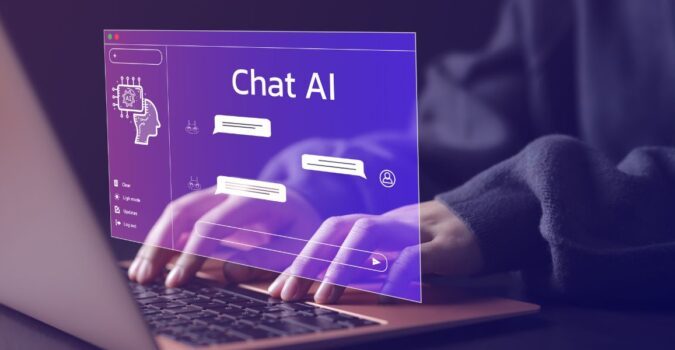Unlocking Scalable Automation Beyond the Chatbot
AI adoption is no longer optional—it’s the fault line separating future-ready businesses from those about to be disrupted.
As generative AI moves from buzzword to business driver, organizations that cling to surface-level tools like chatbots will fall behind. The real opportunity lies deeper—in headless agents. These invisible, high-impact automations operate without user-facing interfaces and are poised to become the digital backbone of modern enterprises.
In this expert conversation, LaunchPad Lab’s Stefanie Kulberg and Ryan Francis unpack how headless agents shift AI from a cost center to a strategic advantage. You’ll learn what they are, where to deploy them, and how to architect a business model that doesn’t just use AI—but runs on it.
Read insights from our experts to learn more!
Read the Full Transcript:
STEFANIE KULBERG: Hi, everyone. I’m Stefanie Kullberg. I am the Vice President of Marketing at Launchpad Lab. And here with me today is Ryan Francis. He is the President and Partner here at Launchpad Lab, and we are here to talk about headless agents.
STEFANIE KULBERG: It is an interesting topic that we’re learning a little bit more about, where I know many have heard a lot about AI agents to date. One aspect that sort of ramps this up and takes it a level further is the concept of headless agents, and we are here to unpack that with you today. So, thank you first, Ryan, for joining us. Just jumping right into the deep end of the pool here. I’d love to just have you start by walking us through what is digital labor. How can headless agents help businesses gain a competitive edge?
RYAN FRANCIS: Yeah. So as we think about the idea of digital labor, I think you start with, like, what really is digital labor, and it’s basically replicating what humans do. But instead of humans doing it, we have AI doing it. So what are all the different things that humans are doing within an organization to, you know, service their customers?
RYAN FRANCIS: What are the different experiences that customers are engaging in where an agent could be embedded? When we think about, like, headless agents, basically, it’s the idea of, like, using agent force, but not agent forces, like, out of the box chat UI. So it’s like, how do you use the power of that agent force back end to have agents reasoning and using that whole Atlas reasoning engine to take the right series of action based on a request? Why that’s important is the out-of-the-box chat that agent force provides is really useful for, like, dropping it into a website for like a service use case.
RYAN FRANCIS: But if you wanna start to get into operational use cases where you have employees who maybe are working in Slack or you have work that needs to get done on a daily basis, but, you know, you don’t want people to have to go in and chat with this AI to get it done. You want it to just happen. These are situations where you don’t wanna use that out-of-the-box UI chat experience to trigger the agent. You wanna have the agent be able to operate in different domains or in different interfaces.
RYAN FRANCIS: You might also want to build your own proprietary UI that gives your brand a differentiating product to release into the market that’s maybe trained and enabled around your proprietary content, with obviously access to your proprietary CRM data. As we think about, like, headless agents, like, the business value that it can add is really in going beyond some of the more, like, kinda simplified AI use cases. Like, service agents, great, but it’s kind of like just the tip of the spear of what you can really do with these AI agents. But you have to move beyond just, like, an out-of-the-box service agent UI and into these, like, headless use cases.
STEFANIE KULBERG: How does that impact, like, revenue, ROI, bottom line?
RYAN FRANCIS: Yeah. So, if you can imagine that most companies built their human teams before this cheap AI intelligence was available. Right? So now they have really, if they took a hard look, they have a lot of waste. They have a lot of human energy going towards things that AI energy should be actually doing to optimize their cost structure.
RYAN FRANCIS: So in order to fully realize the potential of their organization, they should be really targeting, like, how can we get fifty percent of the stuff that we’re doing digitally to be handled by AI? So So we think about all the different things that teams are doing in a digital context. There’s a lot of work happening there. You have, you know, salespeople who are doing research on accounts. They’re creating proposals.
RYAN FRANCIS: You have marketing teams creating content. They’re doing, like, account-based marketing, account research, and targeting.
RYAN FRANCIS: You have operations teams that are or service teams that are doing a ton behind the scenes to service their clients and customers that could be automated through AI agents. You have data analysts that could actually just be AI agents doing that analytical work for you. So there’s so many things that could be automated inside of companies using headless agents. I think I think you’re really looking at if you were to take your human-based labor cost and multiply that by fifty percent, what that’s, like, the value that you could potentially derive by fully embracing headless AI agents. It can be a huge number. There’s just kinda, like, an infinite number of, like, opportunities for it. But, yeah, it really comes down to augmenting human teams and driving more margin in the business.
STEFANIE KULBERG: What makes this sort of different from the out-of-the-box options? I just, I wanna, like, drill into that a little bit more.
RYAN FRANCIS: I think one way to frame it too is, like, when you think about where we’re at right now with just, like, the broader landscape, just like when the Internet came out back in, like, the eighties, generative AI coming out now is that type of a tectonic seismic shift in technology capability.
RYAN FRANCIS: You know, the Internet brought the ability to instantly communicate, and now we have AI bringing the ability to have instant intelligence, and free and close to free, you know, cheap intelligence.
RYAN FRANCIS: And so with that raw capability comes major disruption in every industry, and becomes, you know, there are gonna be winners and they’re gonna be losers as a result of that. The winners are gonna be the companies who find ways to transform and transform their secret sauce to be an AI-first secret sauce, to find ways where AI is actually part of the reason why they’re differentiated.
RYAN FRANCIS: It’s not a, hey. Let’s just buy an off-the-shelf product and kinda use AI. It’s a, hey. Let’s actually reimagine the way our business operates with AI embedded throughout every part of our labor. From marketing to sales to delivery, you know, to service to delivery to product, you’re thinking about how does every how does the entire business become an AI-first business? And I and that’s that’s really where I think you go beyond just buying off the shelf stuff and trying to stitch it all together, and you go into how do you do some more proprietary development with headless agents.
RYAN FRANCIS: The proprietary side is, like, embedding your kind of unique direction for how those agents should behave and what their process looks like and when they should do what. It’s really bringing that kinda whatever your secret sauce is as a business, you’re, like, defining that into your agentic layer through more custom development of that.
STEFANIE KULBERG: Well, and it’s also, I mean, I think others in this kinda interesting about it, which we’ve talked about in the past, is it’s scalable.
RYAN FRANCIS: Totally scalable. Right? Like, if you can handle burst demand. Right? So if you have situations where you have high burst demand, like, from a human team standpoint, it’s really hard to burst grow a human labor pool and then wind it back down.
RYAN FRANCIS: And as you think about scale, it’s not just about scaling the ability to handle that demand, but it’s also about scaling your margins over time. As you grow your top line, how do you make sure that you’re creating economies of scale? Like, if you think about it conceptually, if you have a team of two people, your organization only has two people, finding a bunch of AI wins might help you alleviate hiring new people, but it’s not gonna necessarily bring bottom line benefit right away. But if you have a company of a thousand people and you find the opportunity to offload fifty percent of what your organization is doing with AI, you just found five hundred people worth of, like, value of profit.
RYAN FRANCIS: Right? And then as you scale that, as you grow, that thousand person becomes fifteen hundred or becomes two thousand, the value of what you did to create that scalability just keeps going up. You’re creating more and more margin in the business by, like, creating a digital efficiency.
STEFANIE KULBERG: As I’m listening to you talk through this, it’s making me think of the work that we did at Prosci. I’d love to have you share that story with the people that are listening today, so they can sort of get a sense of how this can be applied in a real-world scenario and really be incredibly impactful for an organization.
RYAN FRANCIS: The story I would tell for Prosci here is, like, look, Prosci, they understand what change means. They’re a change management company. They are responsible for educating companies across the globe on how to handle change. And so when they see this AI situation, they understand the change that it means for their own business.
RYAN FRANCIS: They understand that their customers who go to Prosci to become experts in managing change, they understand that those customers might go to a new startup that’s providing an AI-first experience around getting coached on change management projects. And so Prosci thought, hey. Instead of us getting disrupted by another startup, we’ll build our AI coach. So they built Kaiya, which is their AI ChatGPT, if you will, for change management.
RYAN FRANCIS: It’s been trained on thousands of pieces of proprietary content that only Prosci has about how to execute change management really well within, you know, complex enterprise organizations. They’re finding that their customers are driving seventy-five percent efficiency in their workflows by using Kaiya versus doing this stuff kind of on their own or even with, like, other AI systems that don’t have that proprietary knowledge. So it’s just an example of where an out-of-the-box AI product would not have helped Prosci address their root core problem, which was how do we continue to stay differentiated in an AI era.
RYAN FRANCIS: They had to build a proprietary AI experience in order to solve that problem.
STEFANIE KULBERG: Applying this concept more broadly for something that’s relatable for people, just on a more basic level, I’d love to hear about how just a more general use case that would be relevant to everyone.
STEFANIE KULBERG: For example, like, looking at the Internet. Everybody uses the Internet. Can you walk me through a circumstance where you can think of how this headless agent could be applied and really meaningful in a scenario like that?
RYAN FRANCIS: I think a good example would be where you’re in the digital intake process of an Internet company. You’re interested in getting an Internet plan. I’m coming up with some of the fly here. My thought is, like, you have an experience on the website where you’re an agent is asking you some questions.
RYAN FRANCIS: Like, I’m picturing basically a conversational quoting experience. I’m telling them about what I’m trying to do. I’m giving them my address. It’s just a conversational experience.
RYAN FRANCIS: But it’s not just, like, the out-of-the-box, like, agent force experience. It’s, like, it’s on the page. It’s, like, as I’m talking, my plan is being created on the right. I can see it come to life.
RYAN FRANCIS: And so it’s going beyond just, like, this widget in the bottom right where I’m just, like, having a, like, a simple chat thing and just becoming more of, like the experience is a conversation, and it’s more than just the conversation. It’s also, like, creating something for me on my behalf. You know? As an Internet company, that’s maybe a differentiator to have something that’s, like, more engaging and high touch, but still agentic and differentiated.
STEFANIE KULBERG: No. I like it.
RYAN FRANCIS: Having that sort of type key dialogue.
STEFANIE KULBERG: Yeah. That like, the example I’ve been using lately was when we were trying to change something on an airline, you know, ticket that we had booked, and it kept giving me prompts. I couldn’t get the question that I had that wasn’t within that sort of set list of prompts answered, and, like, it was so frustrating. So in this instance, it’s responding to a dialogue native, you know, like, naturally.
STEFANIE KULBERG: And based on what you’re sort of feeding the back end, it’s gonna get you the information you need, and it’s also gonna feed into the system so you can see on the account level in the CRM space, then the service rep can respond to me, etcetera. So it’s kinda like, it’s the, you know, front and back end of that experience too.
RYAN FRANCIS: Like, that’s a great example of, like, okay. How do you actually identify that experience for the customer? Right? Like, the customer’s gonna come in. They’re gonna have a number of different issues. One of them is that they might wanna change their flight.
RYAN FRANCIS: To identify that experience, you have to give the agent the ability to look up that customer to see what flights that customer has coming up to then be able to, like, confirm which flight the customer is trying to change, to be able to understand why they need to change it, like, what like, in terms of, like, where they wanna change it to. You know, they wanna fly out at a different day, or they need to go to a different city.
RYAN FRANCIS: Right? And so each of those things is like an action that the agent would take. So in Agent Force, they have this concept of actions. Right?
RYAN FRANCIS: You build these actions. So an action could be like fetch flight, or another action could be like update flight. In an update action, you’d say, Here’s the current flight. Here’s the new flight.
RYAN FRANCIS: And then that new flight gets, like, stored in the database for the customer. They’ve registered for that flight. They have a seat, and that’s in there. Right?
RYAN FRANCIS: So, anyway, these actions in Salesforce, you can write flows to do these, but that’s not a great thing to do. Like, if you’re an airline and you really want to have a great agent experience, you should actually write those actions in Heroku because Heroku can simultaneously run an infinite number of that same action. Let’s say there’s a hundred agents that are simultaneously trying to fetch flights or change flights. You don’t want a bunch of flows running in Salesforce, clogging things up.
RYAN FRANCIS: Be better to, like, fire that action in Heroku that can scale up infinitely, compute-wise wise and then can do very complex things, and go reach out to say, in the case of the airline, they’re gonna have some core system. Their primary system for storing flight data is not Salesforce. It’s some other system. Right?
RYAN FRANCIS: And so Heroku can handle interacting with that other system in a secure lockdown way and in an efficient way, and then feeding that back to the agent and agent force. So, actually, that would be a situation where, like, Heroku would be, like, kinda like a headless agentic layer supporting that agent force even if you are using agent force as the core, like, chat experience. So I don’t know if that helps, but, like, think about anything where you’re doing meaningful service agents. Like, they probably should be doing her using Heroku for that.
STEFANIE KULBERG: Definitely a lot to think about when you are figuring out how to build headless agents and what you can do from a business perspective that’s really gonna be beneficial in terms of considering and building this sort of AI agent component.
STEFANIE KULBERG: Thank you, Ryan, so much for your time. I really appreciate it. Hope those of you listening got some really rich information here that you can action on. If you have any questions, feel free to reach out to us at any time. Always happy to help. Thanks again.



